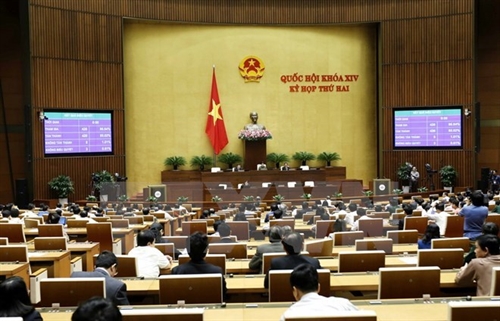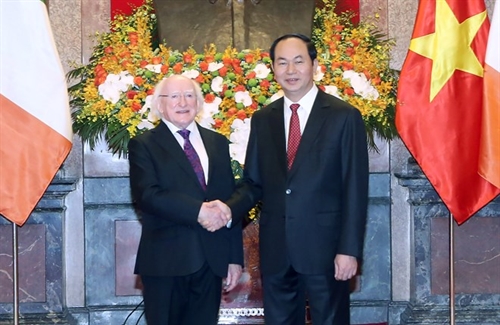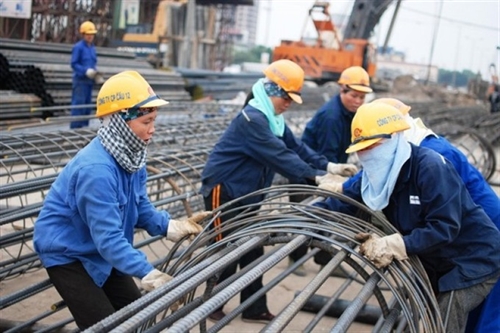State budget overspending will be reduced to below 3.5 percent of GDP by 2020, while public debts, government debts and the country’s foreign debts will not exceed 65 percent, 54 percent and 50 percent, respectively, of GDP annually in the 2016-2020 period.
These goals were set in Resolution on the economic restructuring plan in 2016-2020 which was adopted by 82.39 percent of National Assembly deputies during their plenary session on November 8.
 |
| Lawmakers vote to approve the 2017 socio-economic development plan__Photo: VNA |
Existent non-performing loans in the national economy will be curbed to below 3 percent, while the capitalization of the stock market and the bond market will make up 70 percent and 30 percent of GDP, and at least 1 million businesses will be set up by 2020, among other goals.
The Resolution stressed the need to follow closely the Party guidelines and policies, especially 12th Party Central Committee Resolution No. 05-NQ/TW dated November 1, 2016, to build a growth model measured by labor productivity, the quality and competitiveness of the national economy, and mobilize, allocate and use resources efficiently based on the market’s signals and rules.
The quality of growth should be enhanced and the growth model, which used to rest on investment and exports, should be gradually based on investment, export and the local market. It should be estimated by labor productivity and quality, scientific and technological applications and innovations, the resolution said.
Internal resources should be fully tapped in combination with attracting and using efficiently external resources. The macro-economy stability must be maintained and economic growth must go along with social advancement, progress and justice, the safeguard of defense, security and ecology, scientific and technological applications, human resources quality and workforce restructuring, the document stressed.
The implementation should keep abreast with the market life, and the development of the private sector should be regarded as an important driving force in economic development.
The resolution also mentioned to tackling problems existed in the previous economic restructuring period to deter their effects on socio-economic achievements.
The economic restructuring should be coupled with reshuffling the administration, stepping up the administrative reform, and improving the quality of public services.
The country’s free trade agreements should be soundly implemented to proactively make the best use of international integration and the fourth industrial revolution to ensure economic growth is well associated with the environmental protection and recovery and climate change adaptation, the resolution emphasized.
Key tasks were also identified, including restructuring public investment, state-owned enterprises and credit organizations; rearranging State budget and the public sector; promoting the development of the private sector and reeling in foreign direct investment; modernizing the planning and structuring of sectors and economic zones with regard to increasing productivity, quality, and efficiency and speeding up international economic integration; forming and developing various markets, including the finance market, the land use right market, the labor market and the science and technology market in a uniform fashion.- (VNA/VLLF)









